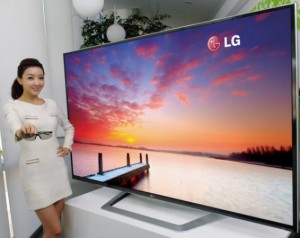The Future of Television: 4K TV
The television is a prime example of how technology in the 21st century is moving at an exponential pace. As soon as high definition was introduced to the world, we were presented with the option of a flat screen HDTV. Everyone who went out and bought a brand new flat screen thought they were living fancy, only to have their hopes and dreams slashed when the 3D Flat Screen HDTV was released. Many individuals have caught on to the scheme, and avoided the 3DTV altogether. We all knew that it was only a matter of time before the next plateau was reached; get ready for the 4KTV.
Although the name is not set in stone, this future TV technology has been referred to as Ultra High Definition, Quad HD, or Super-Hi Vision. 4K is the most succinct name to date, and it describes it’s capabilities best. The 4KTV has four times the resolution quality and four times the number of pixels than current 1080p HDTVs. Standard 1080p Full HD screen dimensions are 1920 x 1080 pixels. 4KTV’s will measure in at a cool 4096 x 2160; this means that within the screen of one 4KTV, you could have four full 1080p TVs.
With 8.3 million pixels versus the 2 million we have become accustomed to, 4K will create some of the most vibrant imagery ever. If you had the chance to see Avatar in theaters, you probably wouldn’t be surprised to learn that it was shot in 4K and displayed using 4K Sony Projectors. For the 2012 Olympic Summer Games in London, 4KTVs will be globally unveiled in some key cities such as Washington D.C. to provide live coverage of the games.
Having this many pixels means that there won’t be the typical primary colored gaps that can be viewed when standing close to a 1080p TV. 3D will become exponentially incredible as well. 4KTV will create the most immersive experience ever, as exhibited by it’s Avatar application. This isn’t the only major upgrade bundled with the 4KTV, various companies aim to incorporate other ease-of-use features such as voice recognition and gesture control similar to the Microsoft Kinect.
When things sound too good to be true, they often are, and there are still some kinks to be worked out. First off, the TV won’t operate in it’s full capacity with content filmed with standard 1080p cameras. Movies, TV shows, and sports will need to be produced in 4K to experience the full effect of the technology. Another challenge will be the enormous bandwidth consumption associated with the switch, although this same issue was brought up with the first digital HDTV though as well.
Just as 1080p is difficult to distinguish from 720p on a 27″ screen, it’s really hard to enjoy all that the 4KTV has to offer at this point with a regular 50″ TV. The consensus seems to be that you’ll need a home projector screen or large room in the house for an 84″ TV to make it worthwhile.
The 4KTV will be available within a year, but don’t expect it to become mainstream for a few years. By that point, there will undoubtedly be another superior model that consumers will be kicking themselves for not waiting for. 8K anyone?
Comments
Tags: 4K, 4K Projector, 4KTV, 8K, 8KTV, future of television, gesture control, Quad HD, Super Hi Vision, Ultra High Definition, Voice Recognition
Trackback from your site.


Comments (3)
Dennis Krieger
| #
wow, kewl….should I wait for the 8K or 16K and really blow my mind?
Reply
Maven
| #
The perfect accessory will be a wall in the home that looks like the other walls until you turn on the telly; then presto magico, your wall becomes your television, it can even be retro-fitted to existing walls. Maybe, it can look like a painting or a mirror for decorative purposes. Yeah, just the reduction in space consumption of the newer t.v.s make it worth investing in a new tube, if it could essentially disappear when not in use, that would be ideal.
Reply
michael
| #
sometimes bigger isnt better expecially with computer applications that require a steady hand… however, higher resolution is always better. id like to see super condensed images like the 4ktv can produce on an average sized monitor or television.
Reply